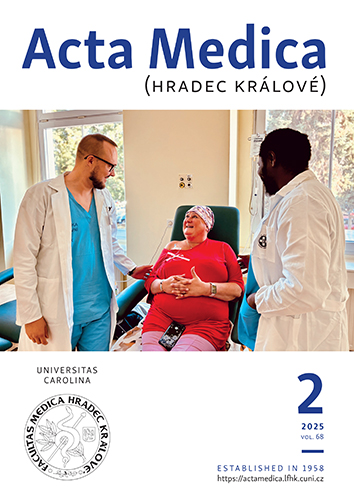ACTA MEDICA, Vol 58 No 3 (2015), 98–103
Osteochondritis Dissecans of the Knee in Children and Adolescents: Our Experience with Transchondral Drilling
Haroun Hassan Shaikh, Jan Vícha, Tomáš Proček, Jaroslav Pavlata, Tomáš Kučera
DOI: https://doi.org/10.14712/18059694.2015.101
zveřejněno: 21. 12. 2015
Abstract
Osteochondritis dissecans(OCD) of the knee is identified with increasing frequency in the adolescent patient. Left untreated, OCD can cause significant impairment and restriction in physical activity and development of osteoarthritis at an early age. The diagnosis of lesions of OCD can be confirmed on plain radiographs. MRI has emerged as the gold standard to evaluate the stability of the lesion and the integrity of the overlying articular cartilage. Treatment of OCD lesions depend on the stability of the lesion. Stable lesions can be treated conservatively by physical activity modification and immobilization. Unstable lesions and stable lesions not responding to conservative measures should be treated surgically. Surgical options range from arthroscopic drilling, either transarticular or extra-articular drilling for stable lesions or salvage procedures such as autologous chondrocyte transplantation (ACT), mosaicplasty to restore joint and cartilage congruency.
klíčová slova: Osteochondritis dissecans; Juvenile OCD; Transarticular drilling; Knee joint

Osteochondritis Dissecans of the Knee in Children and Adolescents: Our Experience with Transchondral Drilling is licensed under a Creative Commons Attribution 4.0 International License.
210 x 297 mm
vychází: 4 x ročně
cena tištěného čísla: 150 Kč
ISSN: 1211-4286
E-ISSN: 1805-9694
